

Now, there must be some of you out there thinking to yourselves that I seem to favour the colour grey quite a bit. Maybe it may be a subliminal reflection upon myself and my psyche, but there is method in my madness.
Sure, I have to admit that a great deal of my terrain work features the colour, but I think it is reflective of the world around us. Grey surrounds us in the form of natural rocks, the cloudy skies, the urban tarmac below our feet, and of course, the endless municipal 20th century buildings and dwellings we seem to have in the western world. As depressing as it sounds, grey is everywhere.

St Georges Minster Doncaster: One of my towns local landmarks. For as much as it’s beautiful architecture, it’s pretty darn grey!
Ok, so where is the colour? Why should this real life dredge apply so much to terrain building and my stuff primarily when I have all the colours in the world to deal with in these imaginary worlds that I can create?

The grey monotony of the stark and austere dungeon terrain is broken by the colour of the individual figures and models.
As much as I like garish and bright colours, I believe that terrain should not just look pretty on the table, but should reflect the world imagined around them. More importantly, since I’m dealing with miniatures, as much as I want my terrain to shine, it’s them that are the primary accent of colour on the table, the battlefield and terrain are secondary. I feel that everything else should be muted, that way the focus is on the action and the models, and making sure that the figures are not lost in a blur of colour. Monochrome terrain helps the colourful figures pop and stand out from the scenics. Now I’m not saying that everything should be grey on the table, but my preference allows for highlights that draw the eye, not to bombard the eye with far too much busy colour that might not be needed unless it’s really called for, hence making the important figures and objectives the centre of attention.

Grey everywhere, yet the lone blue creature stands out from the scene.
Now this is just my own opinion, but I much prefer this to overtly busy and incorrectly used colour palettes. I would however like to know your thoughts. Do you think that I’m talking bull? or do you think there is some truth to this?
Whatever your opinions, let me know in the comments section and give your side!










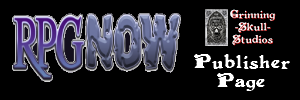




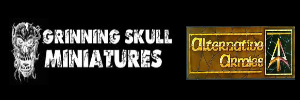
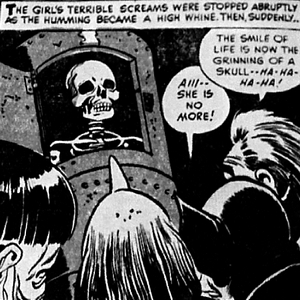



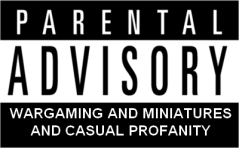










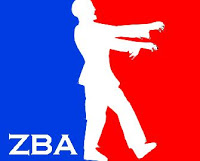

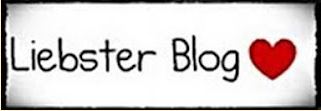


I would actually agree with you that too much colour in terrain can not only distract from the miniatures, but also make elements look fake. If you think about it, truely vibrant colours do occure in nature but more often than not (especially from a distance) they will be more subdued. In general I mix always a bit of brown in any colour to desaturate it when I paint terrain pieces. Even static grass, poison ivy etc. can be too stark at first and needs some brown wash to blend with the environment.
However, I don’t think it is about introducing stark, bright colours, but rather emphasising form, texture and structure, which can be doen using subtle changes in shades. For instance you can have several shades of grey introducing brown, blue or even green to achieve a certain atmophere and to differentiate different sections. Furniture can introduce faded blue, reds and greens, especially in a Dungeon where any fabrics would decay and colours would fade.
That said I see this as a stylistic decision. Other terrain makers use bright, saturated colours and achieve a wonderful effect. This can work very well with miniatures that are more comicesque (for instance the old Confrontation miniatures or Super Dungeon Explore). As always it comes down to personal preference. I prefer your stylistic choices and find the colouration of your Dungeon pieces to be realistic whith enough variation to guide the eye. Obviously I say that because I follow a similar philosophy. There is no right or wrong, much rather it is about artistic expression and what you, and to some extend your audience, prefer :).
LikeLiked by 1 person
Thanks for your comment. I agree! I do think that more or less, it’ll be (for me) that it comes to stylistic choices, after all, when the rest of my pieces are done the same way, it’d probably be a wrong move to suddenly start painting parts in a different scheme! I think brown and green are the next two colours I end up using more than most (next to grey that is) although I think I’m going to have to make more of an effort in future to try more alternate schemes, such as sandstone, red brick, marble etc as it can get a bit austere and depressing with so much grey terrain around my working area!! 😉
LikeLike
You can also introduce wooden floors, natural caves (sewers/mushroom cave/crystal cave/ spider nest/underground lake etc.) While these would still be subdued in coloration I could see those adding new exciting textures while not clashing too much with the other structures.
LikeLike
I’d like to take a stab at all of those environs, the crystal and mushroom types especially. I have a great idea for crystal structures, just experimenting with suitable glues as not to discolour the materials i’ve got planned!
LikeLike
I contemplated to get some actual quartz crystals and enhance them with washes. it seems on ebay you can get 500g of crystals for 10 Dollars, so that is fairly cheap. You could even make casts of them out of clear resin. Not sure how well they cut however, which might eb a problem.
Which technique did you envision using (if it is not a secret at the moment 😉 ).
LikeLiked by 1 person
I thought about quartz too, but then found some interesting clear and coloured plastic gem type fishtank gravel. (you get about 100 for £1 or so) they seem pretty neat so I think I’ll try something with them eventually, but I’ll experiment with allsorts of clear plastic, resin and maybe even glass chunks to see what looks cool. I’ve just seen some really interesting UV activated completely clear glue that looks as if it’ll be perfect, but again it’ll be a issue of experimentation and research to see whats best/easiest!!
LikeLike
Looking forward to the results. I could see that melting and stretching some fo those plastics might also be an idea.
LikeLiked by 1 person